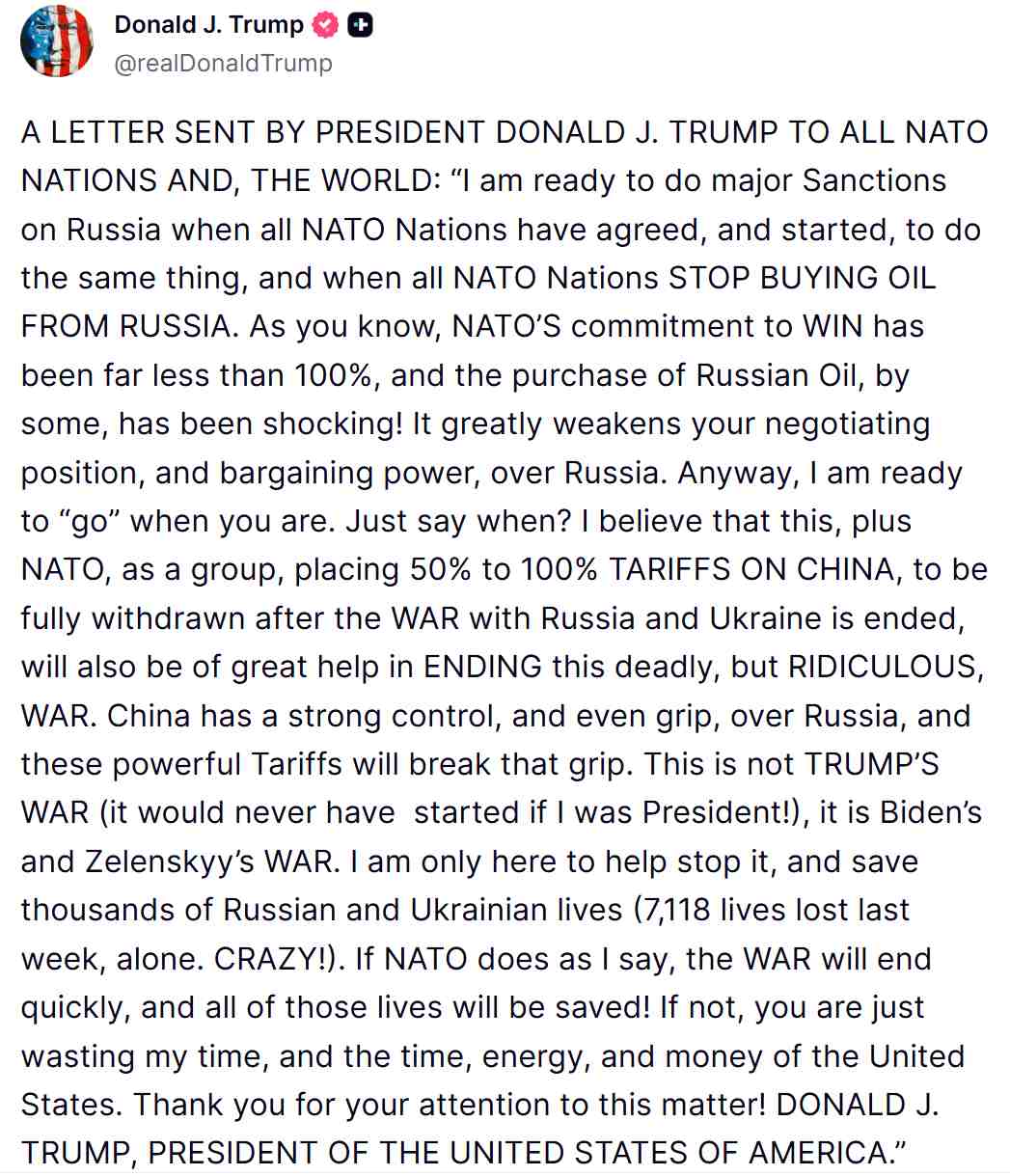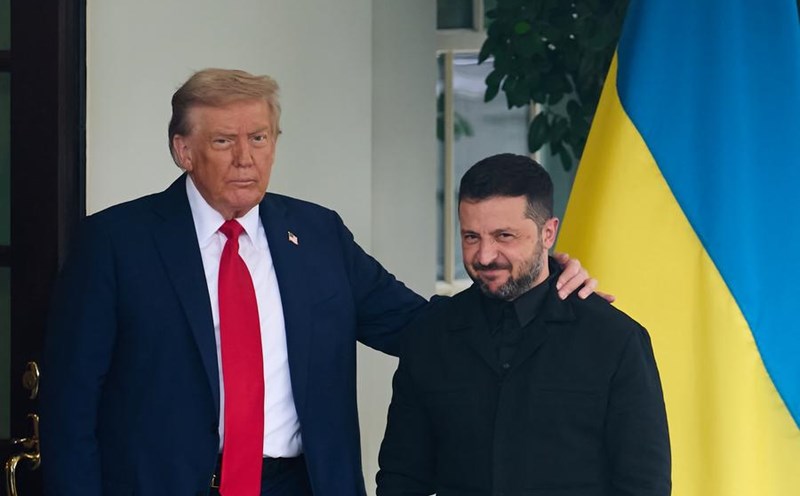In a letter he published on the social network Truth Social on September 13, President Donald Trump wrote: I am ready to impose major sanctions on Russia when all NATO countries agree, and start doing the same, and when all NATO stops buying oil from Russia.
The White House chief stressed that the fact that some NATO countries still import Russian oil is "shocking, seriously weakening the negotiating position before Moscow". Mr. Trump ended the letter with the statement: "I am ready to " tay off" when you are ready. Just say when?".
This move, if implemented, would mark a turning point in NATO's collective policy, which has long been divided in its approach to Russian energy. Although the EU has banned imports of Russian crude oil by sea and refined products such as diesel, many countries still maintain imports of liquefied natural gas (LNG) and some crude oil via pipeline.
According to Eurostat, Russia's oil imports to Europe in the first quarter of 2025 decreased to 1.72 billion USD, much lower than the 16.4 billion USD in the same period in 2021. However, Russia still accounts for 19% of the EU's LNG market share, and Turkey - a NATO member but not EU - is currently the third largest customer of Russian oil, after China and India.
Trump's "ultimatum" to NATO rather than just targeting the EU is believed to force Turkey to participate, as Turkey remains an important export pillar of Russian oil.
Not only stopping in Russia, Mr. Trump also asked NATO to impose a tax rate of 50% to 100% on China, considering this an effective lever to end the conflict in Ukraine. He suggested that the tax would be completely lifted immediately after the conflict ended.
I believe that if NATO, as a bloc, stops importing Russian oil and imposes high tariffs on China, this deadly and unreasonable war will soon end - Mr. Trump affirmed.

Data in 2024 shows that the EU still imports goods worth up to 41.9 billion USD from Russia, despite sharp cuts in energy. The countries in the bloc generally choose a more cautious approach than the US, avoiding the risk of escalating into a full-scale trade war.
Mr Trump's letter was issued in the context of the momentum for peace negotiations after a direct meeting between him and Russian President Vladimir Putin in Alaska on August 15 that was almost inaccurate.
With a strong approach and many trade calculations, Mr. Trump once again showed that he wanted to push the ball of responsibility to NATO allies: Either accept the economic risk with the US, or continue to maintain a deadlock in the Russia-Ukraine conflict that has lasted for more than 3 years.










